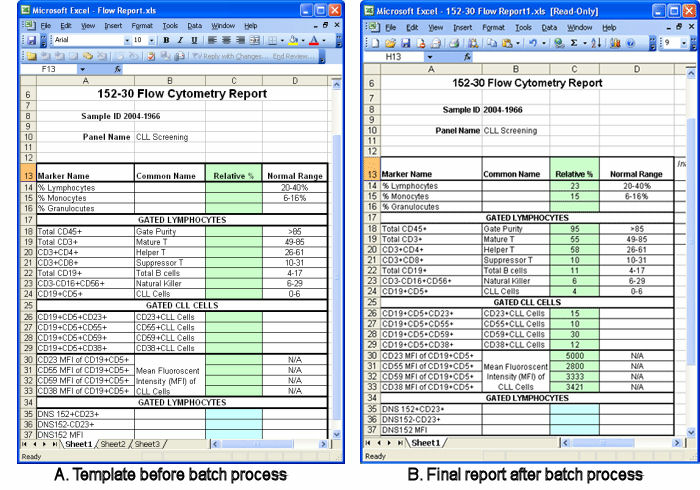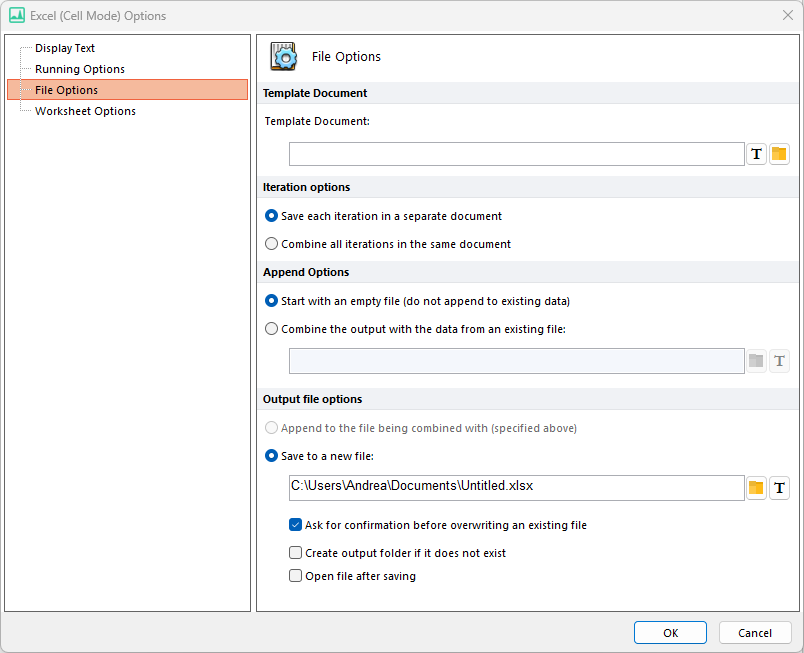Export to Excel (Cell Mode)
The Excel (Cell Mode) report allows you to merge your data with a preexisting spreadsheet. Select a Template Document (spreadsheet) containing headings, fonts, and colors, and then specify the exact cell destination for each output item, including pictures. An example is shown in Figure 8.38.
TIP: You can create Excel templates for Excel (Cell Mode) reports. Excel templates are simply Excel spreadsheets. You can use any Excel functionality in the spreadsheets that are used as templates. Simply leave blank cells where you want FCS Express to put the data or pictures. Enter those cells as the Cell Address on the Field page of the options dialog corresponding to the exported item.

Figure 8.38 An Example Excel (Cell Mode) Report
Excel (Cell Mode) Options dialog is comprised of four sections:
•File Options
This section (Figure 8.39) has four sub-sections:
oTemplate Document
Enter the filename (and path) to your preformatted Excel workbook. The first worksheet in the workbook will be used as the template.
oIteration options
Output each Batch iteration to a separate file (the default), or combine the output from all Batch iterations to a single file. In the latter case, each iteration is written to a separate worksheet within a single Excel workbook.
oThe Append Options and Output file options are identical to those for the Export to Excel (Column Mode).

Figure 8.39 Excel (Cell Mode) File Options
•Worksheet Options
Options (Figure 8.40) allows users to specify the specific Excel worksheet name that data will be added to, by typing in a name or by selecting a Token to use in the name.

Figure 8.40 Example Excel (Cell Mode) Worksheet Option
